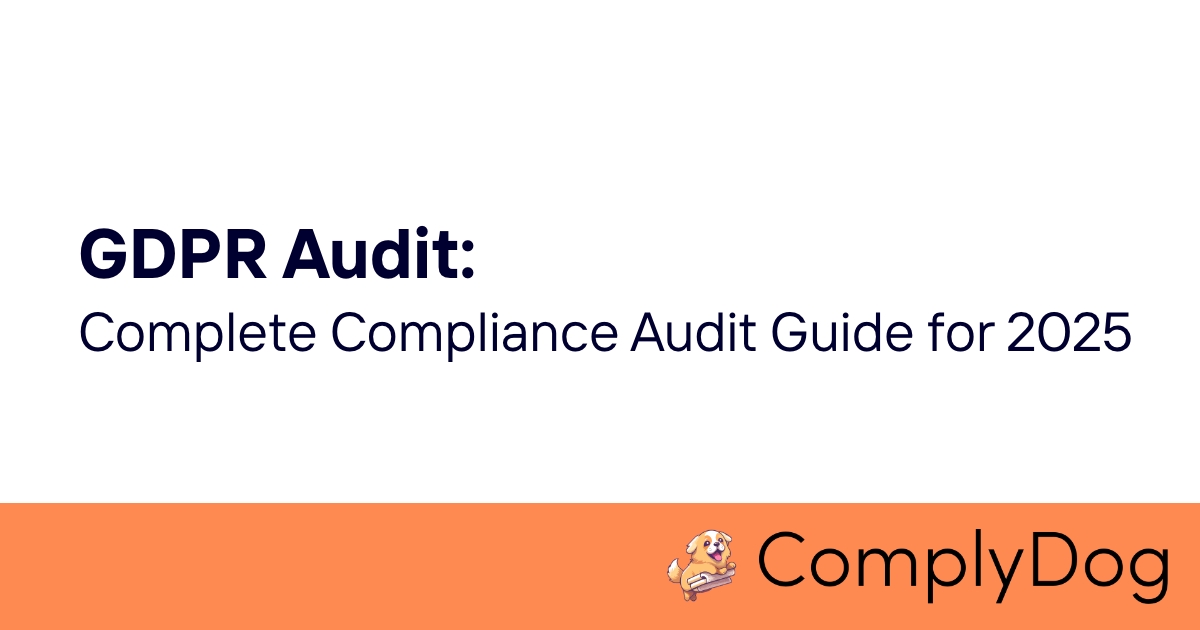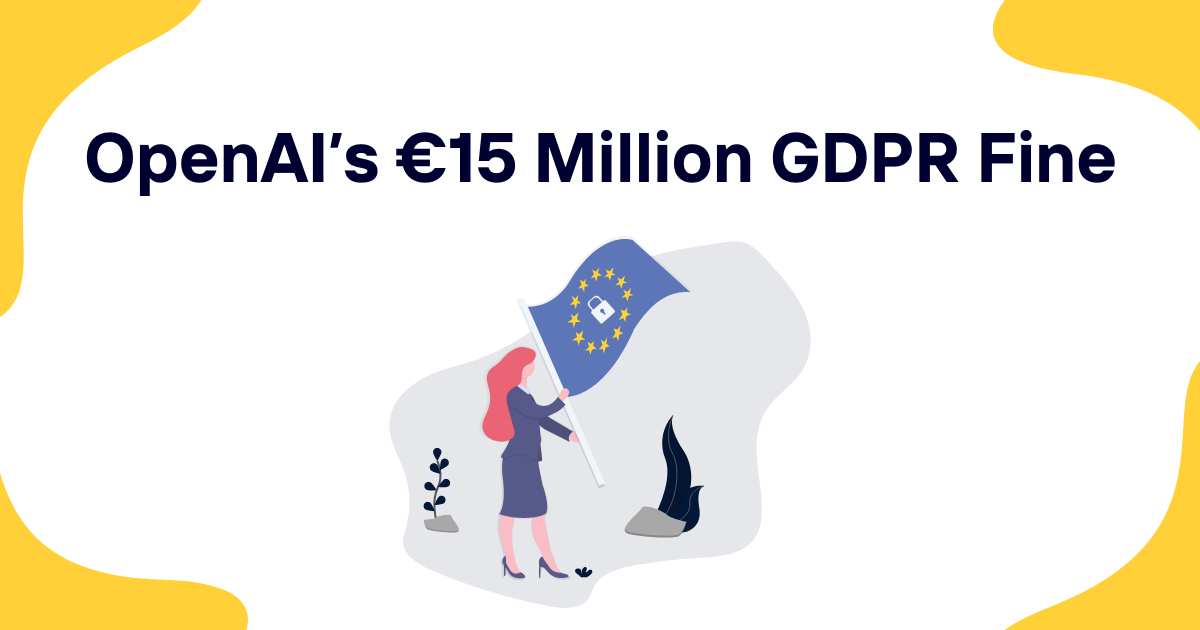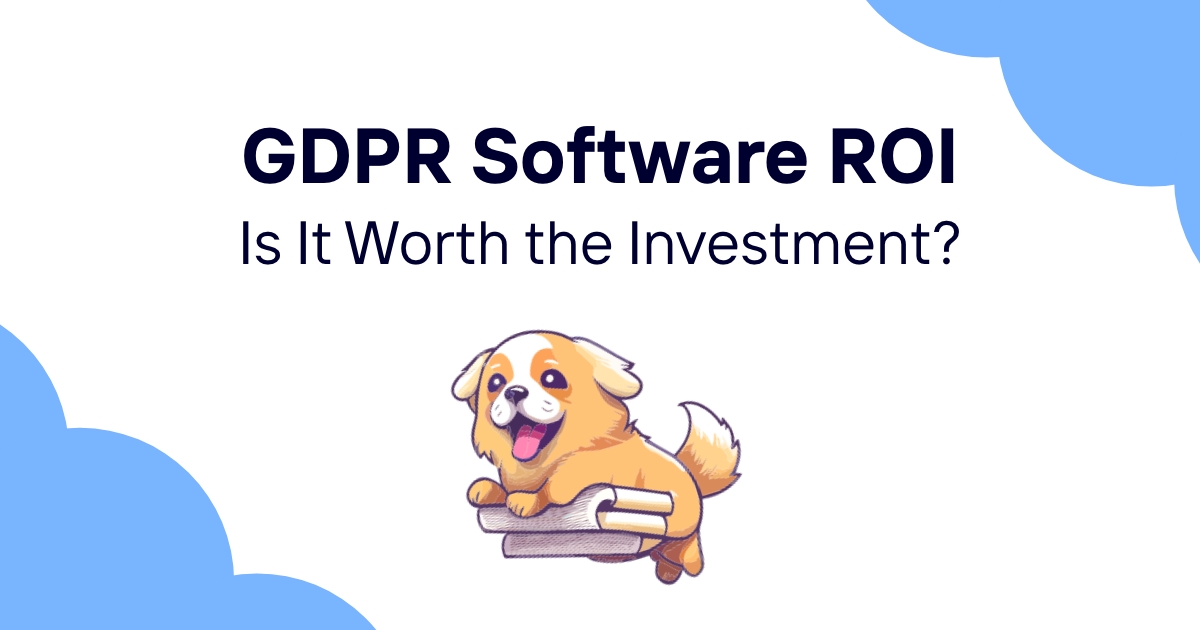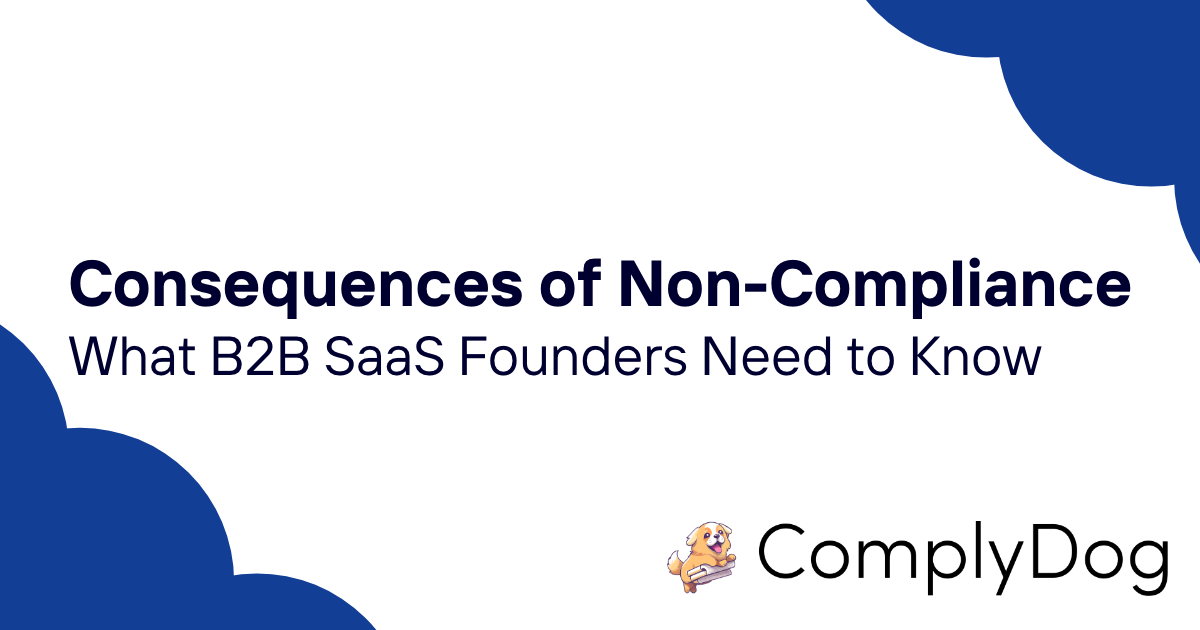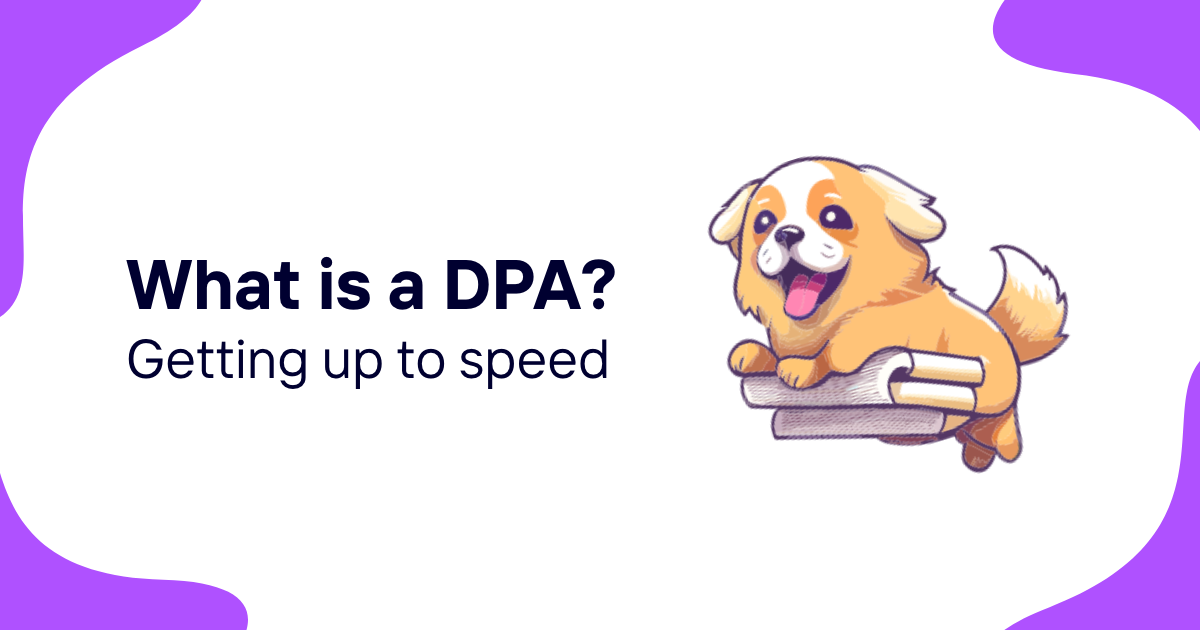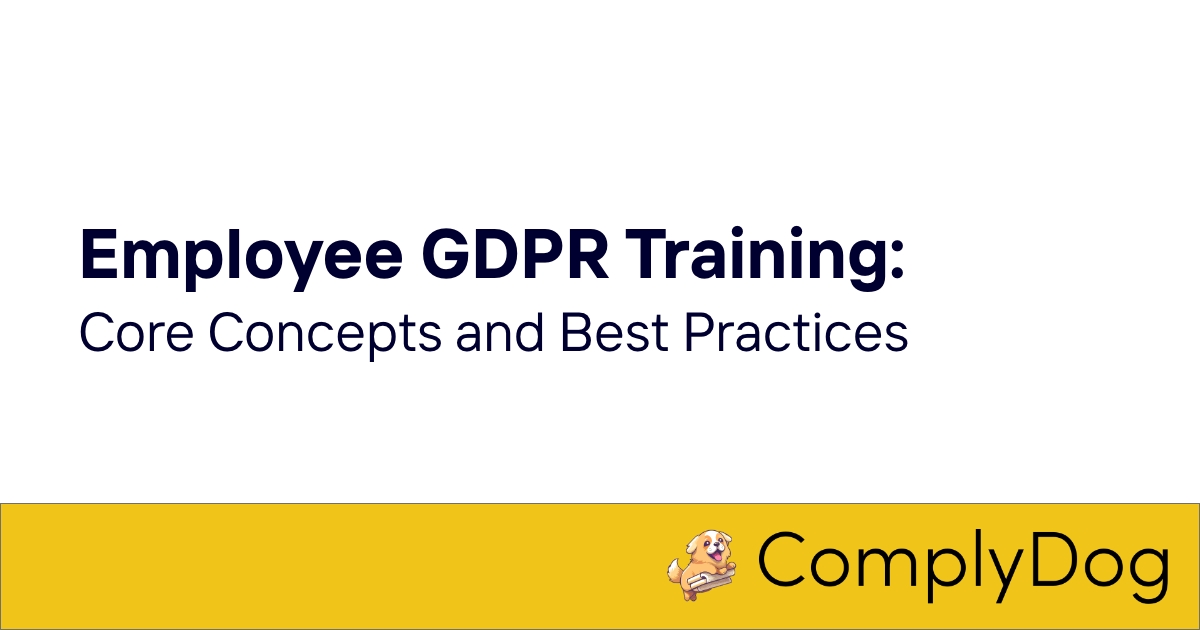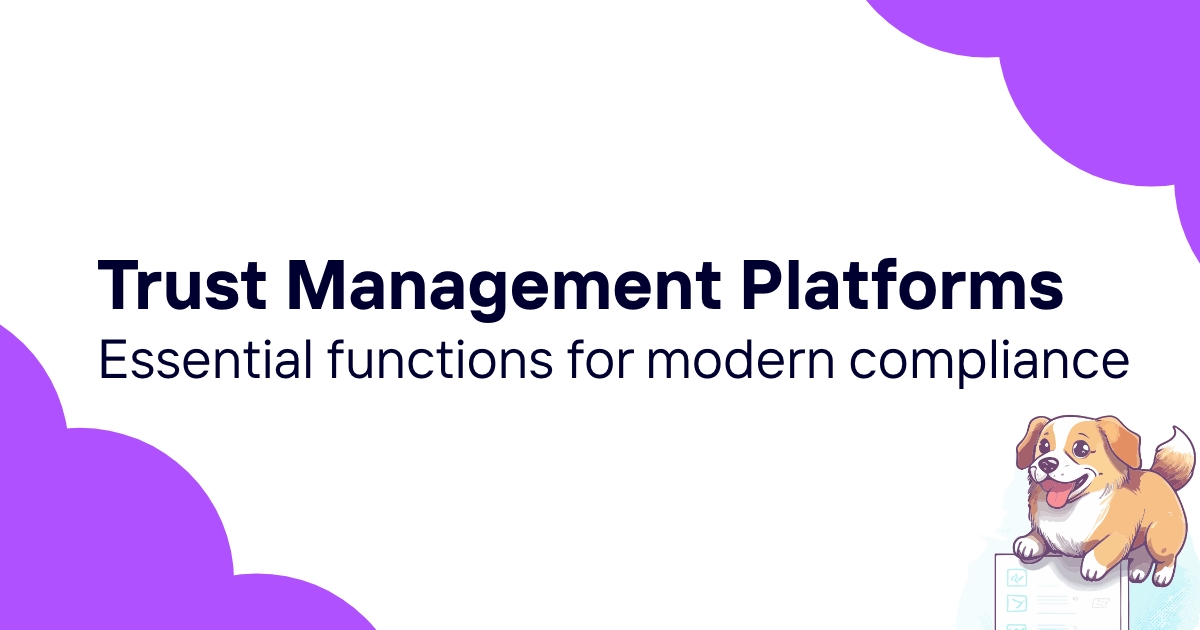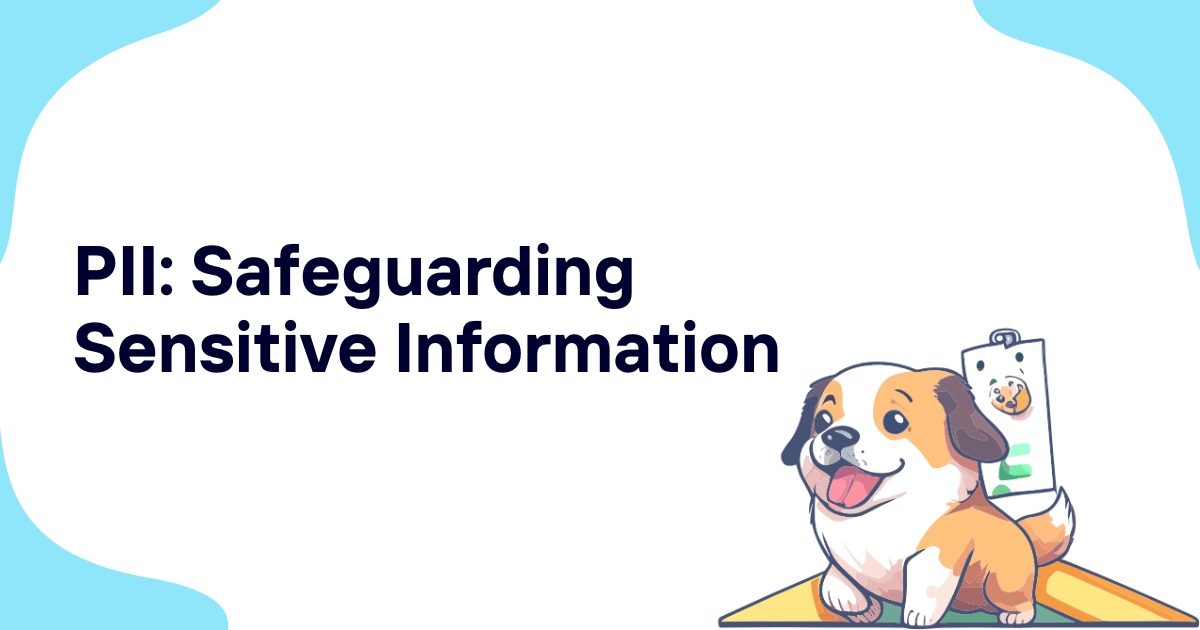GDPR audits have become essential tools for organizations to verify compliance, identify risks, and demonstrate accountability under the General Data Protection Regulation. With data protection authorities increasing enforcement activities and penalties reaching record levels, systematic auditing helps organizations proactively address compliance gaps before they become costly violations.
This comprehensive guide provides step-by-step methodology for conducting effective GDPR audits, from initial planning through remediation tracking. Whether you're conducting internal audits or preparing for regulatory examinations, this guide offers practical frameworks for thorough compliance assessment.
What is a GDPR Audit?
A GDPR audit is a systematic examination of an organization's data processing activities, policies, and procedures to assess compliance with the General Data Protection Regulation and identify areas requiring improvement.
Purpose and Objectives
GDPR audits serve multiple critical functions for organizations processing personal data:
Compliance Verification: Audits provide objective assessment of whether current practices meet GDPR requirements and identify specific areas of non-compliance.
Risk Identification: Systematic examination helps identify privacy risks that could lead to data breaches, regulatory penalties, or reputational damage.
Accountability Demonstration: Regular auditing demonstrates organizational commitment to privacy protection and supports accountability requirements under GDPR Article 5.
Continuous Improvement: Audit findings guide improvement efforts and help organizations strengthen their privacy programs over time.
Regulatory Preparation: Regular internal audits help organizations prepare for potential regulatory examinations by identifying and addressing issues proactively.
Types of GDPR Audits
Different audit types serve different organizational needs and circumstances:
Internal Audits: Self-assessments conducted by organizational staff to evaluate compliance status and identify improvement opportunities.
External Audits: Independent assessments conducted by third-party specialists who provide objective evaluation and specialized expertise.
Compliance Audits: Focused examinations that assess adherence to specific GDPR requirements and regulatory obligations.
Risk Audits: Comprehensive evaluations that identify and assess privacy risks across all organizational activities and systems.
Pre-Implementation Audits: Assessments conducted before deploying new systems or processes to identify privacy impacts and required safeguards.
Post-Incident Audits: Examinations following data breaches or privacy incidents to understand root causes and prevent recurrence.
Audit Scope Considerations
Effective audits require clear scope definition that addresses organizational priorities and risk factors:
Organizational Coverage: Audits may cover entire organizations or focus on specific business units, departments, or geographic regions.
Processing Activity Focus: Some audits examine all data processing while others focus on high-risk activities or specific types of personal data.
System Integration: Comprehensive audits examine all systems and technologies while targeted audits may focus on specific applications or platforms.
Temporal Scope: Audits may examine current practices or include historical analysis to understand compliance trends and incident patterns.
Regulatory Alignment: Audit scope should align with applicable regulations beyond GDPR including sector-specific requirements and other privacy laws.
Legal and Business Context
GDPR audits operate within complex legal and business environments that affect methodology and outcomes:
Regulatory Expectations: Data protection authorities expect organizations to conduct regular compliance assessments and maintain audit documentation.
Legal Privilege: Proper audit structuring may provide legal privilege protection for audit findings and remediation planning.
Business Integration: Effective audits integrate with broader business risk management and compliance programs rather than operating in isolation.
Stakeholder Communication: Audit results often require communication to various stakeholders including senior leadership, legal counsel, and business partners.
GDPR Audit Scope and Objectives
Defining clear audit scope and objectives ensures comprehensive coverage while maintaining practical focus on the most important compliance areas and business risks.
Scope Definition Framework
Systematic scope definition helps ensure audit completeness while managing resource requirements:
Business Process Coverage: Identify all business processes that involve personal data processing from customer acquisition through data deletion.
Geographic Boundaries: Define geographic scope including all locations where personal data is processed, stored, or accessed.
System Integration: Include all technology systems that handle personal data including cloud services, backup systems, and third-party integrations.
Organizational Units: Specify which business units, departments, and subsidiary organizations are included in audit coverage.
Temporal Parameters: Define time periods covered by the audit including lookback periods for compliance assessment and forward-looking risk evaluation.
Risk-Based Prioritization
Effective audits focus attention on areas with highest compliance risks and potential business impact:
High-Risk Processing: Prioritize processing activities that involve sensitive personal data, large data volumes, or significant individual impact.
Regulatory Focus Areas: Emphasize areas that receive particular attention from data protection authorities based on recent enforcement actions.
Business Critical Systems: Focus on systems and processes that are essential to business operations and customer relationships.
Recent Changes: Examine new systems, processes, or business relationships that may not have received comprehensive privacy assessment.
Previous Issues: Pay special attention to areas where previous audits or incidents identified compliance concerns or ongoing risks.
Stakeholder Involvement
Comprehensive audits require input and participation from various organizational stakeholders:
Executive Leadership: Ensure senior leadership understands audit objectives and provides appropriate support and resources.
Legal and Compliance: Involve legal counsel and compliance professionals who understand regulatory requirements and organizational risk tolerance.
IT and Security: Include technical staff who can explain system architectures, data flows, and security implementations.
Business Operations: Engage operational staff who understand how personal data is used in daily business activities.
Data Protection Officers: When organizations have DPOs, they should play central roles in audit planning and execution.
Objective Setting and Success Criteria
Clear objectives help focus audit activities and measure success:
Compliance Assessment Goals: Define specific GDPR requirements and principles that the audit will evaluate.
Risk Identification Targets: Specify types of privacy risks the audit should identify and assess.
Improvement Opportunity Discovery: Identify areas where the audit should find opportunities for enhancing privacy practices.
Documentation Requirements: Define what documentation the audit should produce to support accountability and future compliance efforts.
Timeline and Resource Constraints: Establish realistic timelines and resource limits that ensure audit completion without disrupting business operations.
Pre-Audit Preparation and Planning
Thorough preparation ensures audit efficiency and effectiveness while minimizing disruption to business operations and maximizing the value of audit findings.
Documentation Gathering
Comprehensive audit preparation requires assembling relevant documentation and information:
Policy and Procedure Documents: Collect all privacy policies, data protection procedures, and compliance documentation currently in use.
Data Processing Records: Gather records of processing activities as required by GDPR Article 30 including purposes, legal bases, and data categories.
System Documentation: Assemble technical documentation including system architecture diagrams, data flow maps, and integration specifications.
Contract and Agreement Review: Collect contracts with vendors, customers, and partners that involve personal data processing or sharing.
Training and Awareness Materials: Review privacy training programs, awareness materials, and staff education documentation.
Previous Audit Reports: Examine findings from previous audits, assessments, and regulatory examinations.
Team Assembly and Role Definition
Effective audits require appropriate team composition with clear role definitions:
Audit Lead Selection: Choose experienced professionals who understand both GDPR requirements and organizational business context.
Technical Expertise: Include team members with technical knowledge of systems, databases, and security implementations.
Legal and Compliance Support: Ensure access to legal and compliance expertise for interpreting regulatory requirements and assessing legal risks.
Business Process Knowledge: Include representatives who understand business operations and how personal data supports business objectives.
Independence Considerations: For internal audits, ensure sufficient independence from audited activities to provide objective assessment.
Technology and Tool Preparation
Modern audits often require specialized tools and technology support:
Data Discovery Tools: Prepare automated tools for identifying personal data across systems and databases.
Documentation Platforms: Set up systems for organizing audit documentation, findings, and evidence.
Communication Systems: Establish secure communication channels for audit team coordination and stakeholder engagement.
Analysis Software: Prepare tools for analyzing data flows, risks, and compliance status across complex organizational environments.
Reporting Platforms: Set up systems for creating and distributing audit reports and remediation tracking.
Stakeholder Communication and Coordination
Effective audit execution requires clear communication with all affected stakeholders:
Audit Announcement: Communicate audit objectives, scope, and timeline to all relevant organizational stakeholders.
Participation Expectations: Clearly define what participation is expected from different organizational roles and departments.
Schedule Coordination: Coordinate audit activities with business operations to minimize disruption while ensuring access to necessary resources.
Confidentiality Agreements: Establish appropriate confidentiality protections for audit information and findings.
Progress Reporting: Set up regular communication channels for updating stakeholders on audit progress and preliminary findings.
As outlined in our GDPR principles guide, comprehensive audits must assess adherence to all seven fundamental GDPR principles throughout organizational operations.
GDPR Audit Methodology and Process
Systematic audit methodology ensures comprehensive coverage while maintaining efficiency and producing reliable, actionable findings.
Phase-Based Audit Approach
Structured audit phases help manage complex assessments while ensuring thorough coverage:
Planning and Scoping Phase: Define audit objectives, scope, methodology, and resource requirements before beginning substantive audit work.
Information Gathering Phase: Collect documentation, conduct interviews, and gather evidence about current privacy practices and compliance status.
Testing and Evaluation Phase: Perform detailed testing of controls, processes, and systems to verify compliance and identify gaps.
Analysis and Assessment Phase: Analyze findings to identify patterns, assess risks, and determine compliance status across different areas.
Reporting and Communication Phase: Document findings, develop recommendations, and communicate results to appropriate stakeholders.
Evidence Collection Methodology
Reliable audit conclusions require systematic evidence collection across multiple sources:
Document Review: Examine policies, procedures, contracts, and other documentation for compliance with GDPR requirements.
System Testing: Test technical controls, security measures, and data processing systems to verify they operate as documented.
Interview Processes: Conduct structured interviews with staff to understand actual practices and identify potential gaps between policies and implementation.
Observation Techniques: Observe business processes and data handling practices to verify they align with documented procedures.
Sampling Strategies: Use appropriate sampling techniques when comprehensive review of all activities is not feasible.
Risk Assessment Integration
Effective audits integrate risk assessment throughout the evaluation process:
Risk Identification: Systematically identify privacy risks associated with different business activities and data processing operations.
Impact Analysis: Assess potential impacts of identified risks on individuals, business operations, and regulatory compliance.
Likelihood Evaluation: Evaluate the likelihood that identified risks could materialize given current controls and circumstances.
Risk Prioritization: Prioritize risks based on combined impact and likelihood assessments to focus remediation efforts effectively.
Control Effectiveness: Assess how effectively current controls mitigate identified risks and prevent compliance violations.
Quality Assurance and Validation
Audit quality requires systematic validation and quality assurance throughout the process:
Finding Verification: Verify audit findings through multiple evidence sources and validation techniques.
Peer Review: Use peer review processes to validate audit methodology, findings, and conclusions.
Stakeholder Validation: Validate findings with relevant stakeholders to ensure accuracy and completeness of understanding.
Documentation Standards: Maintain high documentation standards that support audit conclusions and enable future verification.
Continuous Monitoring: Implement ongoing monitoring during audit execution to identify emerging issues and adjust methodology as needed.
Data Processing Activity Assessment
Comprehensive assessment of data processing activities forms the core of effective GDPR audits, requiring systematic evaluation of all personal data handling across the organization.
Processing Activity Inventory
Thorough audit begins with complete inventory of all personal data processing activities:
Activity Identification: Identify all business processes, systems, and activities that involve personal data collection, storage, or use.
Data Flow Mapping: Map how personal data moves through organizational systems including collection points, processing activities, and sharing arrangements.
Purpose Documentation: Document the specific purposes for each processing activity and verify they align with GDPR requirements.
Legal Basis Assessment: Evaluate the legal basis for each processing activity and ensure appropriate documentation and compliance measures.
Data Category Classification: Classify all personal data by type, sensitivity level, and applicable protection requirements.
Data Subject Rights Compliance
Assess organizational capability to support individual rights under GDPR:
Access Request Processing: Evaluate systems and processes for handling data subject access requests including timelines, accuracy, and completeness.
Correction and Deletion Capabilities: Assess technical and procedural capabilities for correcting inaccurate data and deleting data upon request.
Consent Management: Review consent collection, recording, and withdrawal processes for compliance with GDPR standards.
Objection and Restriction Handling: Evaluate procedures for processing objections to data use and requests for processing restrictions.
Portability Support: Assess capabilities for providing personal data in portable formats when required by GDPR.
Cross-Border Transfer Assessment
Evaluate compliance with GDPR requirements for international data transfers:
Transfer Identification: Identify all instances where personal data is transferred outside the European Economic Area.
Legal Mechanism Verification: Verify that appropriate legal mechanisms are in place for all international transfers including adequacy decisions, standard contractual clauses, or other approved methods.
Safeguard Implementation: Assess implementation of appropriate safeguards for protecting personal data during international transfers.
Documentation Completeness: Verify that all international transfers are properly documented with appropriate legal and contractual protections.
Ongoing Monitoring: Evaluate processes for monitoring international transfer compliance and adapting to changing legal requirements.
Vendor and Third-Party Processing
Assess compliance requirements for relationships involving third-party data processing:
Processor Identification: Identify all third parties that process personal data on behalf of the organization.
Contract Compliance: Review data processing agreements for compliance with GDPR Article 28 requirements.
Due Diligence Assessment: Evaluate due diligence processes for selecting and monitoring third-party processors.
Ongoing Oversight: Assess ongoing oversight and monitoring of third-party processor compliance and performance.
Sub-processor Management: Review management of sub-processor relationships and compliance with approval and notification requirements.
Technical and Organizational Measures Review
Assessment of technical and organizational measures determines whether appropriate safeguards protect personal data throughout its lifecycle.
Security Control Assessment
Comprehensive security evaluation covers both technical and procedural protections:
Encryption Implementation: Assess encryption usage for personal data both in transit and at rest including algorithm strength and key management practices.
Access Control Systems: Evaluate access control mechanisms including authentication, authorization, and privilege management for systems containing personal data.
Network Security: Review network security controls including firewalls, intrusion detection, and secure communication protocols.
System Hardening: Assess system configuration and hardening practices for servers, databases, and applications handling personal data.
Vulnerability Management: Evaluate processes for identifying, assessing, and remediating security vulnerabilities that could affect personal data protection.
Data Protection by Design and Default
Evaluate implementation of privacy-protective approaches in system and process design:
Default Privacy Settings: Assess whether systems are configured with privacy-protective settings by default rather than requiring user configuration.
Privacy Impact Assessments: Review processes for conducting privacy impact assessments for new systems and business processes.
Data Minimization Implementation: Evaluate technical and procedural measures that limit data collection and processing to necessary purposes.
Purpose Limitation Controls: Assess controls that prevent data use beyond original collection purposes without appropriate legal basis.
Retention Management: Evaluate automated and manual processes for enforcing data retention policies and secure deletion requirements.
Organizational Security Measures
Evaluate non-technical measures that support comprehensive data protection:
Staff Training Programs: Assess privacy and security training programs including coverage, frequency, and effectiveness measurement.
Policy Implementation: Review policy development, communication, and enforcement processes for privacy and security requirements.
Incident Response Procedures: Evaluate incident response capabilities including detection, containment, investigation, and notification procedures.
Physical Security: Assess physical security measures for facilities, equipment, and storage media containing personal data.
Vendor Security Management: Review security requirements and oversight for vendors and third parties handling personal data.
Monitoring and Audit Capabilities
Assess ongoing monitoring and audit capabilities that support continuous compliance:
Activity Monitoring: Evaluate systems for monitoring personal data access, modification, and sharing activities.
Compliance Tracking: Assess tools and processes for tracking compliance status and identifying potential issues.
Audit Logging: Review audit logging capabilities including coverage, retention, and analysis of security and privacy-related events.
Performance Metrics: Evaluate metrics and key performance indicators for measuring privacy program effectiveness.
Regular Assessment: Review processes for conducting regular compliance assessments and updating protection measures.
As discussed in our GDPR software solutions guide, comprehensive technical and organizational measures often require specialized tools and platforms to implement effectively at scale.
Gap Analysis and Risk Assessment
Systematic gap analysis and risk assessment help prioritize remediation efforts and ensure resources focus on the most critical compliance issues.
Compliance Gap Identification
Structured analysis identifies specific areas where current practices fall short of GDPR requirements:
Legal Requirement Mapping: Map specific GDPR requirements against current organizational practices to identify gaps in compliance coverage.
Control Effectiveness Assessment: Evaluate whether existing controls effectively address their intended compliance objectives.
Documentation Deficiencies: Identify areas where required documentation is missing, incomplete, or inadequate for demonstrating compliance.
Process Standardization: Assess consistency of compliance practices across different business units and organizational locations.
Technology Gap Analysis: Identify technology limitations that prevent effective implementation of required privacy protections.
Risk Prioritization Framework
Effective risk assessment requires systematic prioritization based on impact and likelihood:
Impact Assessment: Evaluate potential impacts of identified gaps including regulatory penalties, reputational damage, and business disruption.
Likelihood Evaluation: Assess the probability that identified risks could materialize given current circumstances and threat environment.
Risk Scoring: Develop quantitative or qualitative risk scores that enable objective comparison and prioritization of different risks.
Regulatory Priority: Consider areas that receive particular attention from data protection authorities based on recent enforcement trends.
Business Criticality: Prioritize risks that could affect business-critical processes or customer relationships.
Root Cause Analysis
Understanding underlying causes helps develop effective remediation strategies:
System Limitations: Identify technology limitations that contribute to compliance gaps and prevent effective privacy protection.
Process Deficiencies: Assess business process issues that create compliance risks or prevent effective implementation of privacy measures.
Resource Constraints: Evaluate whether resource limitations contribute to compliance gaps and affect remediation capabilities.
Training and Awareness: Assess whether staff knowledge gaps contribute to compliance issues and risk exposure.
Cultural Factors: Consider organizational culture factors that may help or hinder effective privacy protection implementation.
Remediation Planning
Systematic remediation planning ensures effective resolution of identified issues:
Priority Sequencing: Develop implementation sequences that address highest-priority risks first while considering dependencies and resource constraints.
Resource Allocation: Estimate resource requirements for different remediation activities including staff time, technology investment, and external support.
Timeline Development: Create realistic timelines for remediation activities that balance urgency with implementation quality and business continuity.
Success Metrics: Define measurable success criteria for remediation activities that enable progress tracking and effectiveness assessment.
Risk Mitigation: Identify interim risk mitigation measures that can reduce exposure while comprehensive remediation is implemented.
Audit Reporting and Remediation Planning
Effective audit reporting communicates findings clearly while providing actionable guidance for remediation and ongoing compliance improvement.
Executive Summary Development
Clear executive summaries communicate key findings and recommendations to senior leadership:
Overall Compliance Status: Provide high-level assessment of organizational compliance with GDPR requirements.
Critical Issues Identification: Highlight the most serious compliance gaps and risks requiring immediate attention.
Strategic Recommendations: Offer strategic guidance for strengthening privacy programs and achieving sustainable compliance.
Resource Requirements: Summarize resource needs for addressing identified issues and maintaining ongoing compliance.
Business Impact Assessment: Explain how audit findings affect business operations, customer relationships, and competitive positioning.
Detailed Findings Documentation
Comprehensive documentation supports understanding and remediation of specific issues:
Issue Description: Provide clear, detailed descriptions of each compliance gap or risk identified during the audit.
Evidence Summary: Summarize evidence supporting each finding including documentation reviewed, systems tested, and staff interviewed.
Regulatory Impact: Explain how each finding relates to specific GDPR requirements and potential regulatory consequences.
Business Implications: Describe how each issue affects business operations, customer trust, and organizational objectives.
Remediation Recommendations: Provide specific, actionable recommendations for addressing each identified issue.
Remediation Roadmap Creation
Systematic remediation planning helps organizations address audit findings effectively:
Priority Classification: Classify recommendations by priority level based on risk assessment and business impact analysis.
Implementation Phases: Organize remediation activities into logical phases that build upon each other and enable systematic progress.
Timeline and Milestones: Develop realistic timelines with clear milestones that enable progress tracking and accountability.
Resource Planning: Estimate resource requirements for each remediation activity including budget, staff time, and technology needs.
Success Measurement: Define metrics and criteria for measuring remediation success and ongoing compliance improvement.
Stakeholder Communication
Effective communication ensures appropriate stakeholder engagement and support for remediation efforts:
Leadership Briefings: Provide focused briefings for senior leadership that emphasize strategic implications and resource requirements.
Operational Guidance: Offer detailed guidance for operational staff responsible for implementing specific remediation activities.
Legal and Compliance Updates: Communicate findings and recommendations to legal and compliance professionals who need detailed understanding of regulatory implications.
Technical Implementation Guidance: Provide technical teams with specific guidance for implementing system changes and security improvements.
Progress Reporting: Establish regular reporting mechanisms for tracking remediation progress and identifying implementation challenges.
Ongoing Audit and Monitoring Programs
Sustainable GDPR compliance requires continuous monitoring and regular assessment rather than periodic one-time audits.
Continuous Monitoring Implementation
Effective ongoing compliance requires systematic monitoring of key risk indicators and compliance metrics:
Automated Monitoring: Implement automated systems that continuously monitor data processing activities, security controls, and compliance status.
Key Performance Indicators: Develop metrics that track compliance performance and identify emerging issues before they become serious problems.
Regular Reporting: Establish regular reporting on compliance status, emerging risks, and program effectiveness for appropriate stakeholders.
Trend Analysis: Monitor compliance trends over time to identify patterns and predict future compliance challenges.
Early Warning Systems: Implement alert systems that notify relevant staff when monitoring indicates potential compliance issues.
Periodic Assessment Schedules
Regular assessment schedules ensure ongoing evaluation of compliance effectiveness:
Annual Comprehensive Audits: Conduct thorough annual audits that examine all aspects of privacy compliance and program effectiveness.
Quarterly Focused Reviews: Implement quarterly reviews that focus on specific high-risk areas or recent organizational changes.
Event-Triggered Assessments: Conduct assessments following significant organizational changes, security incidents, or regulatory developments.
System-Specific Audits: Perform targeted audits when implementing new systems or making significant changes to existing technology.
Vendor Compliance Reviews: Regularly assess vendor compliance with data processing agreements and security requirements.
Program Evolution and Improvement
Successful compliance programs continuously evolve based on experience, regulatory changes, and business development:
Lessons Learned Integration: Systematically incorporate lessons from audits, incidents, and compliance challenges into program improvements.
Regulatory Monitoring: Track regulatory developments and enforcement actions to adapt compliance programs to changing requirements.
Best Practice Research: Monitor industry best practices and emerging standards to continuously improve privacy protection approaches.
Stakeholder Feedback: Collect and analyze feedback from customers, employees, and other stakeholders to identify improvement opportunities.
Technology Evolution: Evaluate new technologies and tools that could enhance compliance effectiveness or operational efficiency.
Building effective ongoing audit and monitoring programs requires balancing comprehensive coverage with operational efficiency and resource constraints. The most successful approaches integrate compliance monitoring with broader business operations rather than treating it as a separate compliance activity.
For organizations looking to implement comprehensive GDPR audit and monitoring capabilities, specialized platforms can provide significant advantages over manual processes that are difficult to maintain consistently over time.
Ready to implement systematic GDPR auditing that provides ongoing compliance assurance? Use ComplyDog and get comprehensive audit capabilities integrated with continuous monitoring, automated compliance tracking, and systematic remediation planning that scales with your business growth and evolving regulatory requirements.
